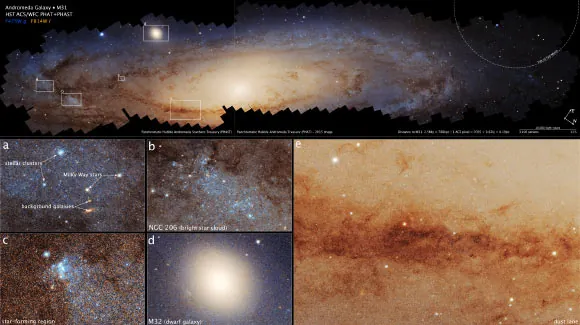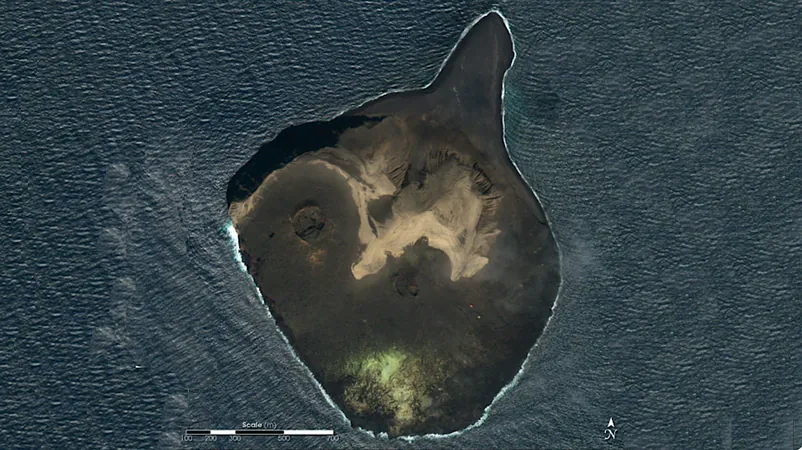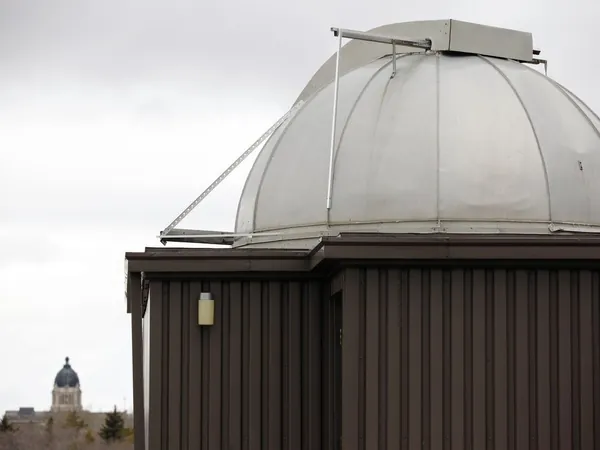
Hubble’s Stunning Photomosaic of Andromeda Galaxy Reveals Billions of Stars in Unprecedented Detail!
2025-01-20
Author: Michael
In a groundbreaking exhibition of cosmic photography, the NASA/ESA Hubble Space Telescope has conducted the most detailed survey of the Andromeda Galaxy to date, a cosmic endeavor that took over a decade to complete. This incredible photomosaic showcases the impressive glow of approximately 200 million stars, pieced together from over 600 individual images.
The Andromeda Galaxy, known scientifically as Messier 31, stands as the closest large galactic neighbor to our Milky Way, located a staggering 2.5 million light-years away. Edwin Hubble, a pioneering American astronomer, first identified this magnificent spiral nebula nearly a century ago.
Although Hubble’s advanced imaging technology has resolved around 200 million stars—detecting only the brightest ones, such as those surpassing our Sun in luminosity—this is merely a fraction of the galaxy's true grandeur. Estimates suggest that Andromeda is home to around one trillion stars, many of which fall below the detection limits of the Hubble Space Telescope.
Describing the challenges of this monumental task, University of Washington astronomer Zhuo Chen remarked, “Photographing Andromeda was a herculean task because the galaxy is a much larger target in the sky compared to the more distant galaxies Hubble typically observes.”
The ambitious undertaking was carried out through two significant Hubble observing programs over the span of more than a decade—starting with the Panchromatic Hubble Andromeda Treasury (PHAT) program. This initiative began around ten years ago and focused on capturing images in various wavelengths including near-ultraviolet, visible, and near-infrared light using Hubble’s Advanced Camera for Surveys (ACS) and Wide Field Camera 3 (WFC3).
The project progressed with the Panchromatic Hubble Andromeda Southern Treasury (PHAST), which added detailed images of around 100 million stars found in the southern section of Andromeda. This area is particularly special, providing insights into the galaxy’s merger history, unlike the northern disk mapped by the initial PHAT survey.
The resulting panoramic view encompasses the entire disk of Andromeda, which is tilted at 77 degrees relative to Earth, allowing scientists to observe it almost edge-on. This vast mosaic was assembled from around 600 individual fields of view, demonstrating the sheer scale and complexity of the galaxy.
The outcomes of this remarkable research are documented in a paper published in the Astrophysical Journal, presenting not only a visual feast but also vital data that enhances our understanding of Andromeda's structure and star population.
For space enthusiasts and scholars, this exquisite photomosaic is a testament to human ingenuity and the relentless pursuit of knowledge about our universe. Prepare to be amazed—the mysteries of the cosmos are just getting started!









 Brasil (PT)
Brasil (PT)
 Canada (EN)
Canada (EN)
 Chile (ES)
Chile (ES)
 Česko (CS)
Česko (CS)
 대한민국 (KO)
대한민국 (KO)
 España (ES)
España (ES)
 France (FR)
France (FR)
 Hong Kong (EN)
Hong Kong (EN)
 Italia (IT)
Italia (IT)
 日本 (JA)
日本 (JA)
 Magyarország (HU)
Magyarország (HU)
 Norge (NO)
Norge (NO)
 Polska (PL)
Polska (PL)
 Schweiz (DE)
Schweiz (DE)
 Singapore (EN)
Singapore (EN)
 Sverige (SV)
Sverige (SV)
 Suomi (FI)
Suomi (FI)
 Türkiye (TR)
Türkiye (TR)
 الإمارات العربية المتحدة (AR)
الإمارات العربية المتحدة (AR)